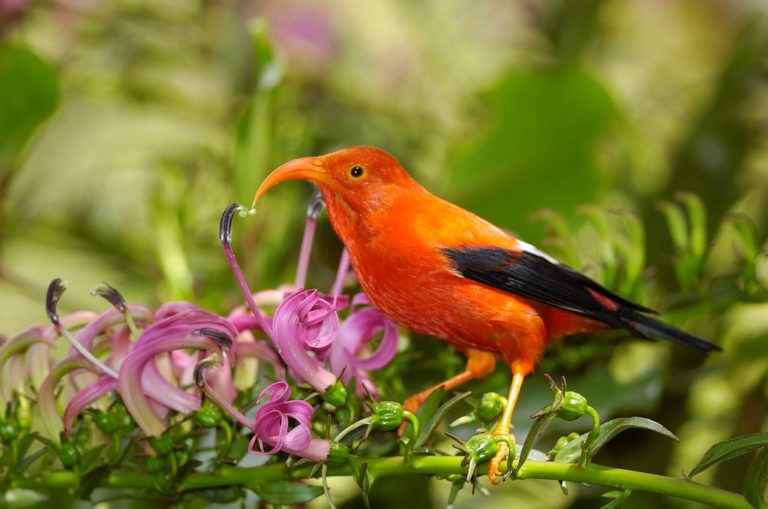Birdfinding.info ⇒ The I’iwi (ee-EE-vee), probably Hawaii’s most emblematic bird, is declining but remains locally common in upper elevation forests of the Big Island, Maui, and decreasingly Kauai. Populations on the other islands have declined to the vanishing point, and its continued presence on them may be due to inter-island wandering. On the Big Island it can be found at most montane sites, both west and east, but is much more common in the east; on Maui, at the Hosmer Grove, Waikamoi Preserve, and Polipoli Spring; and on Kauai at Koke’e State Park.
I’iwi
Drepanis coccinea
Endemic to Hawaii, where it occurs on Kauai, Oahu, Molokai, Maui, and the Big Island. Formerly also on Lanai, but extirpated around 1928.
Occurs in native montane forests of several types, both wet and dry, mostly above about 700 m elevation. It generally favors ohia- and koa-dominated habitats, but is somewhat nomadic in search of flowering trees.
The vast majority of the global population lives on the Big Island (estimated at 340,000 in 1986), with a much smaller but sizeable population on Maui (about 19,000 in 1986, including 176 on western Maui), and a small but potentially viable population on Kauai (about 2,600 in 2012).
In the 2010s, very small numbers were recorded on Oahu, with most recent reports in the Wai’anae Range. There have been a few modern records from Molokai, but it is not clear whether these were recent arrivals from Maui or the remnants of historical populations. On Lanai, it was apparently extirpated, and a dead immature photographed on June 1, 1994, had presumably hatched on Maui.
Identification
Unique: a robust, mid-sized, scarlet honeycreeper with a long, heavy, sickle-shaped coral-pink bill, coral-pink legs, and black wings and tail.
Immatures are mostly pale-gray with dark wings and tail and a golden-brown hood.
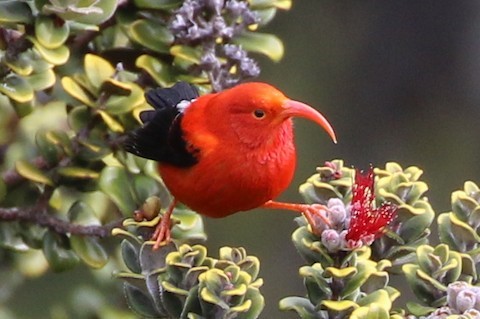
I’iwi. (Hosmer Grove, Haleakala National Park, Maui, Hawaii; December 22, 2019.) © Henggang Cui

I’iwi. (Hosmer Grove, Haleakala National Park, Maui, Hawaii; October 8, 2018.) © Stephan Lorenz

I’iwi. (Pua Akala Tract, Hakalau Forest National Wildlife Refuge, Big Island, Hawaii; October 21, 2017.) © Sharif Uddin
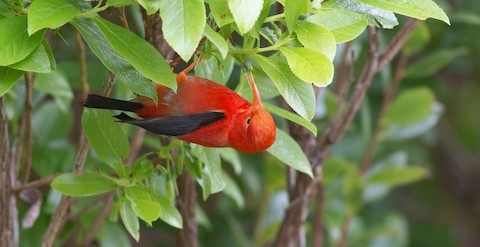
I’iwi. (Pua Akala Tract, Hakalau Forest National Wildlife Refuge, Big Island, Hawaii; April 2, 2019.) © David Brock

I’iwi. (Ka’ana, Kauai, Hawaii; October 5, 2004.) © Jim Denny
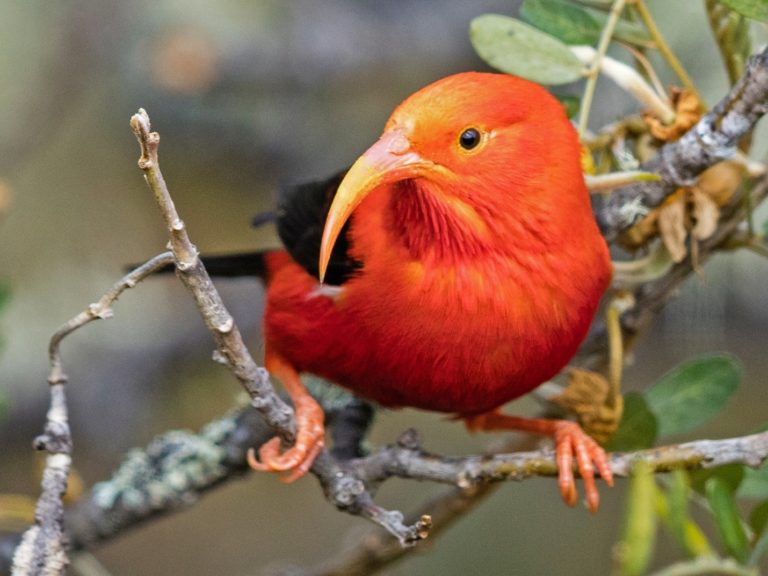
I’iwi. (Hosmer Grove, Haleakala National Park, Maui, Hawaii; April 2, 2017.) © Ryan Sanderson

I’iwi. (Pu’u O’o Trail, Big Island, Hawaii; March 26, 2017.) © Sharif Uddin

I’iwi. (Hosmer Grove, Haleakala National Park, Maui, Hawaii; October 8, 2018.) © Stephan Lorenz
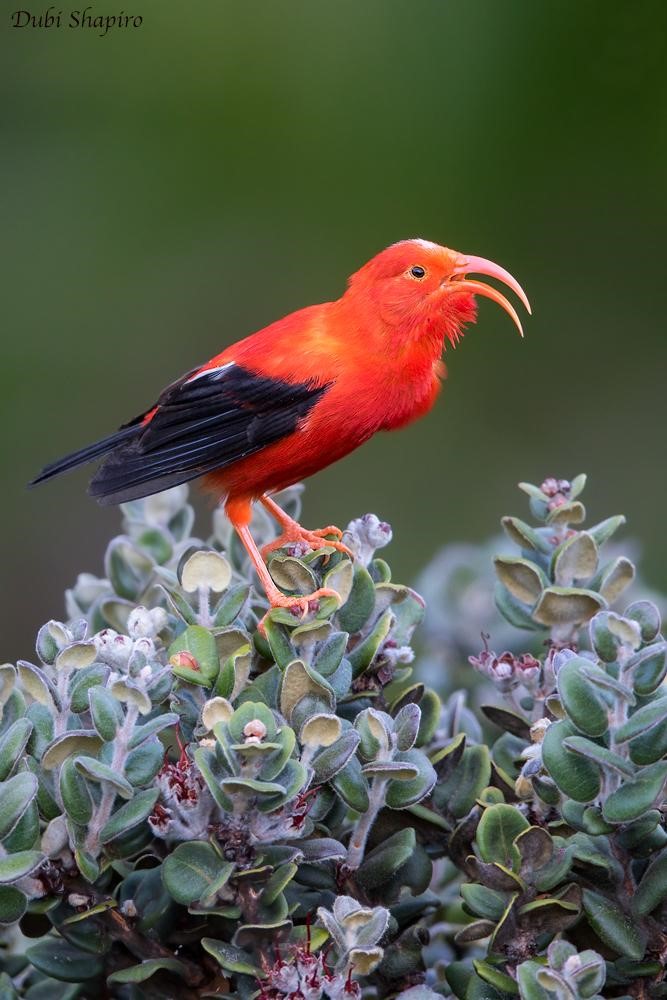
I’iwi. (Hosmer Grove, Haleakala National Park, Maui, Hawaii; June 29, 2016.) © Dubi Shapiro
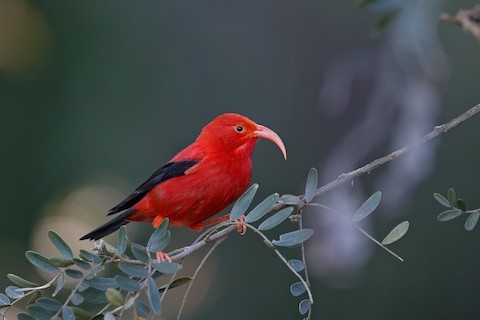
I’iwi. (Hosmer Grove, Haleakala National Park, Maui, Hawaii; March 22, 2019.) © Geoff Malosh

I’iwi. (Hosmer Grove, Haleakala National Park, Maui, Hawaii; March 22, 2019.) © Geoff Malosh
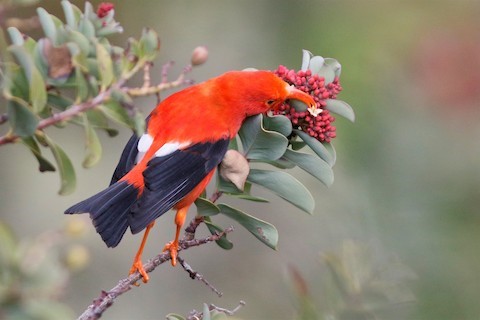
I’iwi. (Hosmer Grove, Haleakala National Park, Maui, Hawaii; October 30, 2019.) © John Sullivan
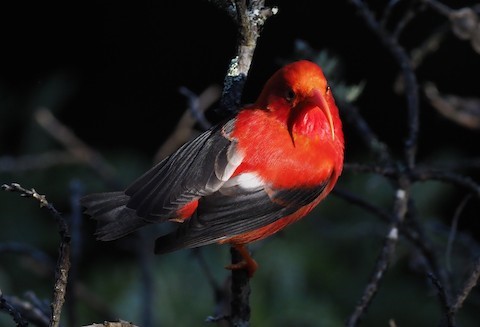
I’iwi. (Hosmer Grove, Haleakala National Park, Maui, Hawaii; October 8, 2018.) © Stephan Lorenz
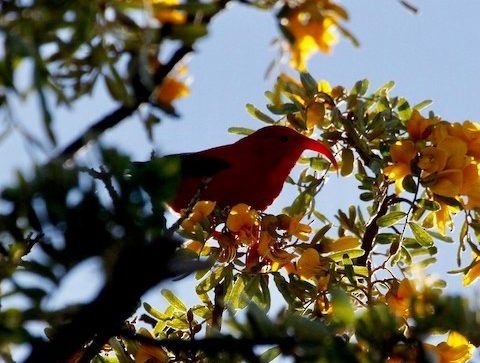
I’iwi, showing the translucency of its backlit bill. (Pu’u La’au, Big Island, Hawaii; December 3, 2017.) © Sherman Wing
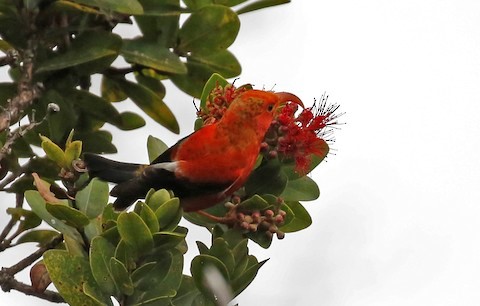
I’iwi, immature molting into adult plumage. (Alakai Swamp Trail, Kauai, Hawaii; December 7, 2017.) © Laura Keene
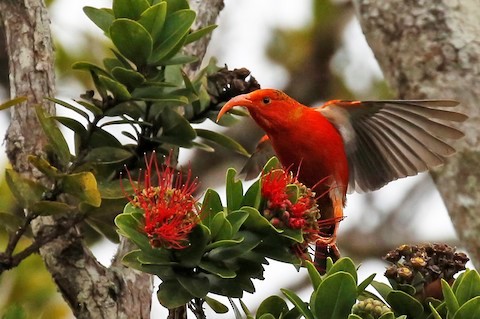
I’iwi. (Alakai Swamp Trail, Kauai, Hawaii; December 7, 2017.) © Laura Keene
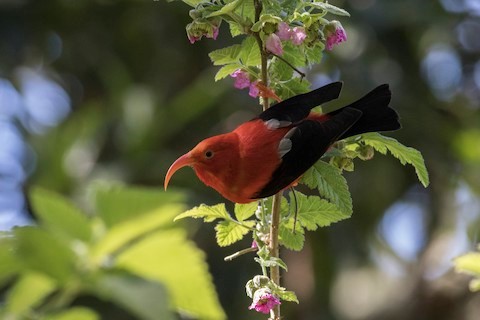
I’iwi. (Pua Akala Tract, Hakalau Forest National Wildlife Refuge, Big Island, Hawaii; March 19, 2019.) © Jacob Drucker

I’iwi. (Hosmer Grove, Haleakala National Park, Maui, Hawaii; January 28, 2006.) © Michael Walther
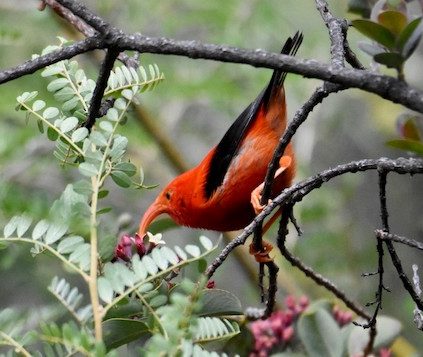
I’iwi. (Hosmer Grove, Haleakala National Park, Maui, Hawaii; July 1, 2019.) © Walter Oshiro
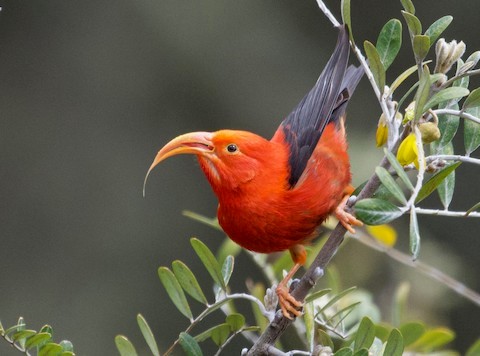
I’iwi. (Hosmer Grove, Haleakala National Park, Maui, Hawaii; April 8, 2019.) © Lizabeth Southworth
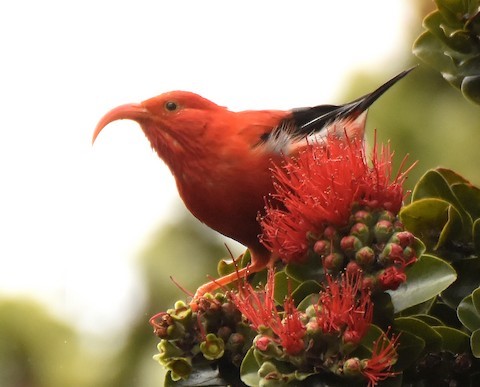
I’iwi. (Pua Akala Tract, Hakalau Forest National Wildlife Refuge, Big Island, Hawaii; August 4, 2015.) © Steven Mlodinow
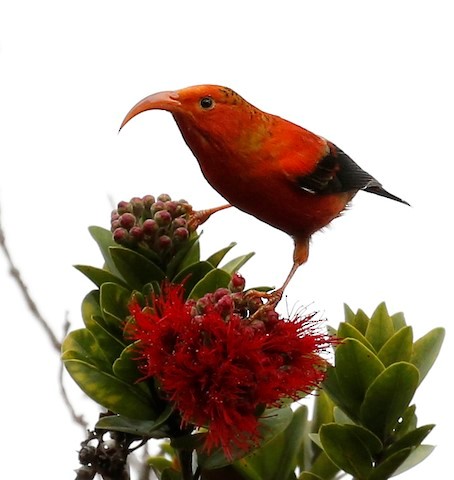
I’iwi, freshly molted into adult plumage—still showing a few subadult feathers. (Alakai Swamp Trail, Kauai, Hawaii; December 7, 2017.) © Laura Keene
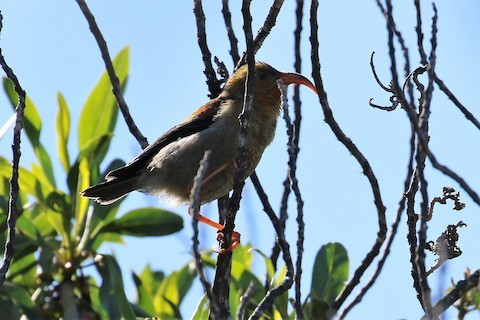
I’iwi, immature. (Pu’u La’au, Big Island, Hawaii; April 13, 2018.) © Joshua Rudolph
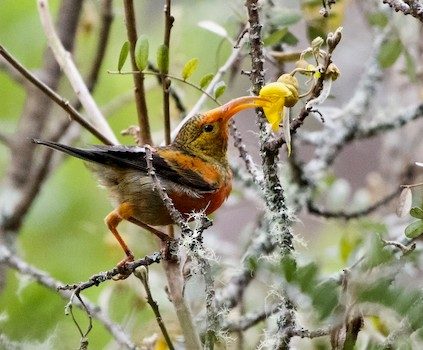
I’iwi, immature. (Hosmer Grove, Haleakala National Park, Maui, Hawaii; April 8, 2019.) © Lizabeth Southworth
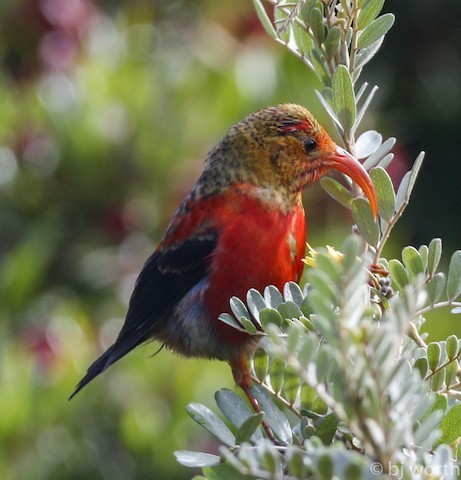
I’iwi, immature molting into adult plumage. (Hosmer Grove, Haleakala National Park, Maui, Hawaii; July 28, 2018.) © B.J. Worth

I’iwi, immature. (Hosmer Grove, Haleakala National Park, Maui, Hawaii; May 6, 2018.) © Alan Schmierer
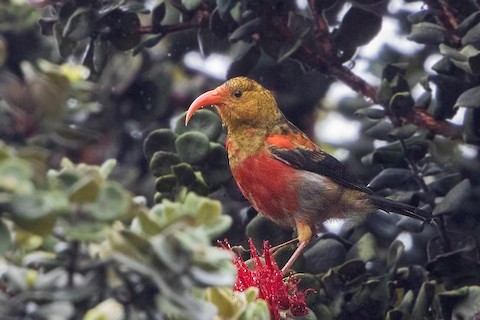
I’iwi, immature molting into adult plumage. (Pu’u O’o Trail, Big Island, Hawaii; September 15, 2018.) © Bradley Hacker

I’iwi, immature molting into adult plumage. (Waikamoi Preserve, Maui, Hawaii; August 8, 2015.) © Lance Benner
Notes
Monotypic species.
IUCN Red List Status: Vulnerable.
References
BirdLife International. 2016. Drepanis coccinea. The IUCN Red List of Threatened Species 2016: e.T22720844A94686315. https://dx.doi.org/10.2305/IUCN.UK.2016-3.RLTS.T22720844A94686315.en. (Accessed May 24, 2020.)
eBird. 2020. eBird: An online database of bird distribution and abundance. Cornell Lab of Ornithology, Ithaca, N.Y. http://www.ebird.org. (Accessed May 24, 2020.)
Pratt, H.D. 2005. The Hawaiian Honeycreepers: Drepanidinae. Oxford University Press.
Pratt, H.D. 2020. Iiwi (Drepanis coccinea). In Handbook of the Birds of the World Alive (J. del Hoyo, A. Elliott, J. Sargatal, D.A. Christie, and E. de Juana, eds.). Lynx Edicions, Barcelona. https://www.hbw.com/node/61452. (Accessed May 9, 2020.)
Pyle, R.L., and P. Pyle. 2017. The Birds of the Hawaiian Islands: Occurrence, History, Distribution, and Status. Version 2 (January 1, 2017). http://hbs.bishopmuseum.org/birds/rlp-monograph/. B.P. Bishop Museum, Honolulu, Hawaii.
Xeno-Canto. 2020. Iiwi – Drepanis coccinea. https://www.xeno-canto.org/species/Drepanis-coccinea. (Accessed May 24, 2020.)
